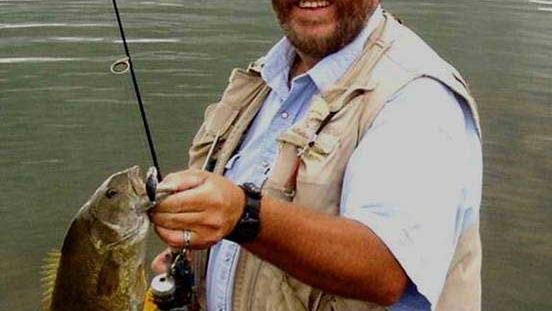It is a question I get occasionally when I’m talking about fishing opportunities in the western part of our state, “We have smallmouth bass in Nebraska?” Smallmouth bass usually conjures up images of the Great Lakes, the St. Lawrence River or some of the upper reaches of the Missouri River, not Nebraska.
“Smallmouth bass are a great fish and fun to fish for lots of action,” said Daryl Bauer, Nebraska Game and Parks Commission fisheries biologist. “Probably the best smallmouth bass water in the state is Lewis and Clark Lake above Gavins Point Dam.”
“There are a couple of Interstate lakes that still have good populations of smallmouth bass. War Axe Lake, near Shelton is a good one,” Bauer added. “Lake McConaughy and Merritt Reservoir have good smallmouth populations and the southwestern lakes are good too. Enders Reservoir is probably the best spot in that region of the state.”
Closer to North Platte, we have a great smallmouth bass fishery in the canal systems, particularly the Central Nebraska Public Power and Irrigation District’s Tri-County Canal, east of town.
Smallmouth bass are part of the sunfish family. They differ a little in the way they look from their cousins, the largemouth bass. They are generally brown or golden looking with darker brown vertical bands. One of their most notable features is that they have red eyes. Another trait is that the jaw line of the smallmouth bass extends back under the eye of the fish. You may have to look at both species of fish, side by side, to see what I mean, but once you do, you won’t forget it.
Like most other fish species the males are generally smaller than females. Males tend to range around 2 pounds while females can range from 3 to 6 pounds. While found in both rivers and reservoirs, smallmouth prefer moving water. They like to ambush their prey from areas of concealment.
Habitat plays a big part in the actual color, and to some extent, the shape of a smallmouth in any given water. Smallmouth that live in dark water will tend to be dark brown in color and be more torpedo shaped. Smallmouth bass that live in places where shade is predominant usually display more of a light yellow-brown or golden color to blend in with their environment. They also tend to be more oval in shape.
Historically, smallmouth bass inhabited waters mentioned at the beginning of this article. They moved outside their native range in 1825 when the Erie Canal was completed and opened up passage to new waters.
People found out they were a hardy species and, like in many cases, thought they would be good to have in other areas. During the mid-to-late 1800s, smallmouth were shipped via the railroad, even as far west as California. They were placed in wooden barrels and aerated via water running into the barrels from the fresh water stored on the train.
As eastern America industrialized during the late 1800s, many streams and rivers were dammed or diverted. Native trout suffered and smallmouth bass were often reintroduced to fill the void. They adapted well.
One of the reasons that sport anglers appreciate smallmouth bass so much is that they are, pound for pound, one of the strongest fighting fish in North America. Tie into a 3-pound smallmouth and you know you have your work cut out for you.
In the Tri-County Canal, I like to take a small doll fly or haired-jig and drift it a few feet out from the bank below a bobber. Smallmouth live in the rip-rap that lines the canal. Drifting a tempting morsel over them in the current is a great way to hook up with a few.
If you are looking for an inexpensive and exciting way to fish, give smallmouth a try.
Walleye tournament
Lake McConaughy will be the site of a walleye tournament July 18 and 19. The Nebraska Walleye Association will be hosting a two-day combined weight open walleye tournament that weekend. You can check out the association’s website at nebraskawalleye.com.
A rules meeting will be at 6 p.m. MT Friday at Sands Edge in Lemoyne. Registration is $300 for a two-person team. Email Richard McShane at redcopper@gmail.com for a tournament poster or contact Nate Stender at 402-750-0228 or Dave Nadgwick at 402-657-8189 for more information.
North Platte River flows
The North Platte River is currently running bank full, but starting tomorrow, the U.S. Fish and Wildlife Service will order the release of more water from Lake McConaughy, enough to get a flow rate of 3,000 cubic feet per second at North Platte. That is a lot of water.
This is a “chokepoint test” and the goal is to see if water flows through the chokepoint area, which is a few miles either side of the Highway 83 bridge next to Cody Park. Encroachment of phragmites has narrowed the river channel and caused the chokepoint.
Work was done on a “channel berm” is 2018 and this will test whether the berm will do what it was designed to do — namely keep flood water away from residential properties along North River Road. Keep an eye on the river folks.
Credit: Source link






























